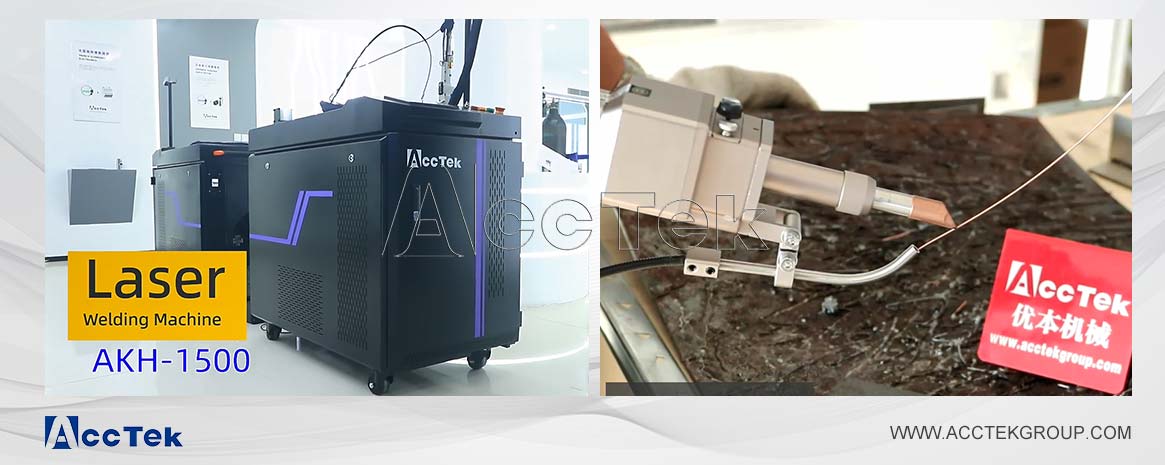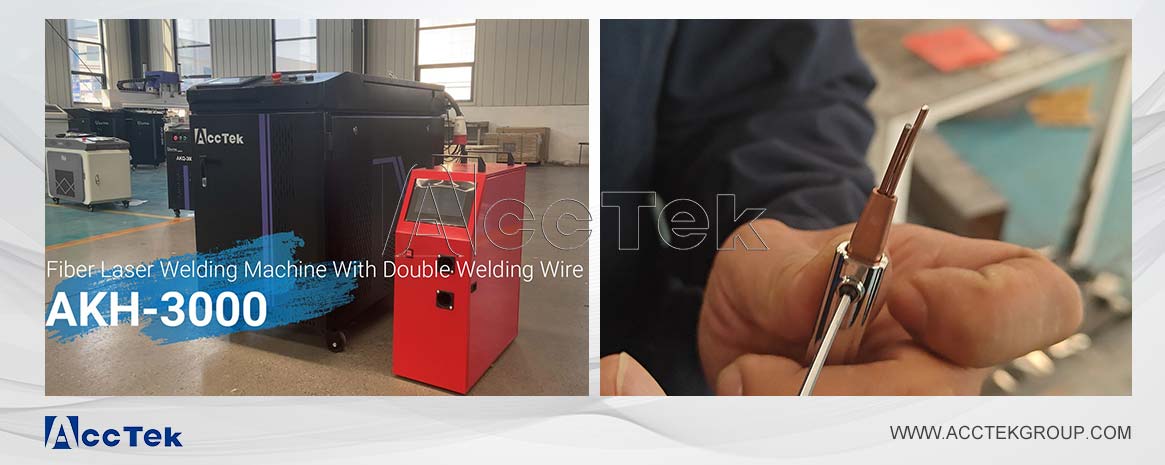Laser welding machine: ordinary wire feeding VS double wire feeding
![[field:title /]](https://www.acctekgroup.com/templets/youben/images/shijian.png)
![[field:title /]](https://www.acctekgroup.com/templets/youben/images/zuozhe.png)
![[field:title /]](https://www.acctekgroup.com/templets/youben/images/cishu.png)
This article explores the contrasts between ordinary wire feeding and double wire feeding in laser welding machines to help you identify the best solution for your welding requirements.
Laser welding technology has become a cornerstone of modern manufacturing, offering unparalleled precision, speed, and versatility. A key aspect of its operation lies in the wire feeding mechanism, which introduces filler material into the welding process to join or repair components effectively. Among the available options, ordinary wire feeding and double wire feeding stand out as two distinct methods, each catering to specific industrial needs. Understanding their differences is important for manufacturers looking to optimize their welding performance, achieve desired joint properties, and meet the demands of diverse applications.
This article explores the contrasts between ordinary wire feeding and double wire feeding in laser welding machines, shedding light on their mechanisms, advantages, and limitations. Ordinary wire feeding is the traditional approach, known for its simplicity and reliability in standard welding tasks. On the other hand, double wire feeding represents an advanced method designed for high-performance applications, offering enhanced deposition rates and flexibility. By comparing these two techniques, we aim to help you identify the best solution for your welding requirements, whether it’s precision in intricate projects or efficiency in large-scale operations.
Understanding Ordinary Wire Feeding Laser Welding Machine
Ordinary wire feeding is the most common configuration for laser welding machines. In this method, a single wire is fed into the welding zone to serve as filler material. The wire melts under the focused laser beam and fills gaps or joins materials, creating a high-quality weld.
Key Features: Conventional wire-feed laser welding machines utilize a single wire as filler material, fed consistently into the welding zone. The system integrates a precise wire feeder with the laser beam, ensuring accurate material delivery and minimal wastage. These machines are ideal for joining metals with fine tolerances, where additional material is necessary to fill gaps or strengthen the weld. They typically support a range of wire diameters and materials, such as steel, aluminum, and alloys, allowing for versatility across applications. Their straightforward design prioritizes simplicity, precision, and reliability, making them suitable for various industries.
Advantages: The primary advantage of conventional wire-feed laser welding machines is their simplicity and cost-effectiveness. Their ability to provide precise material delivery results in high-quality welds with minimal defects. They are relatively easy to operate and maintain, with lower operational costs due to single-wire usage. This makes them a practical choice for routine welding tasks where high deposition rates or advanced features are not essential.
Limitations: Despite their reliability, conventional wire-feed laser welding machines face limitations in more demanding applications. Their single-wire design limits deposition rates, reducing efficiency for welding thick or large-scale components. They lack the flexibility to weld dissimilar materials or achieve tailored metallurgical properties in joints. Additionally, their suitability for advanced processes, such as additive manufacturing or high-speed welding, is limited, making them less versatile compared to dual-wire or more advanced configurations.
Understanding Double Wire Feeding Laser Welding Machine
Double wire feeding is an advanced configuration in laser welding that introduces two wires simultaneously into the weld zone. This system is designed to address the limitations of ordinary wire feeding by increasing deposition rates, improving joint properties, and expanding the range of welding applications.
Key Features: Dual-wire laser welding machines utilize two wires simultaneously, fed into the welding zone at controlled speeds. The wires can be of the same or different materials, offering versatility in joint customization and metallurgical properties. These machines are equipped with advanced feeding systems to ensure precise control over wire delivery, enabling higher deposition rates. The ability to independently adjust the feed rates of each wire allows for tailored welding strategies, making them ideal for complex tasks such as dissimilar material joining, thick workpiece welding, and additive manufacturing.
Advantages: The primary advantage of dual-wire laser welding machines is their significantly enhanced deposition rate, which increases welding efficiency and reduces processing time. They offer flexibility in material selection, allowing for the welding of dissimilar metals or the addition of alloying elements to improve joint strength, corrosion resistance, or other properties. Additionally, their ability to handle thicker materials and produce high-quality welds with fewer defects enhances their appeal for demanding industrial tasks.
Limitations: While offering advanced capabilities, dual-wire laser welding machines come with higher complexity and cost. The additional wire feeder system and control mechanisms increase the initial investment and require more maintenance. Operating these machines often demands skilled personnel to manage the intricate feeding process and optimize parameters. Moreover, the higher material consumption associated with dual-wire feeding can lead to increased operational costs, making them less economical for small-scale or routine welding tasks. Their advanced features may also be underutilized in applications where single-wire feeding suffices, reducing their cost-effectiveness in such scenarios.
Ordinary wire feeding and double wire feeding each offer distinct advantages for laser welding machines. Ordinary wire feeding is ideal for general-purpose tasks, while double wire feeding excels in high-performance, demanding applications. By understanding the differences, applications, and limitations of these methods, you can make an informed decision that maximizes efficiency, quality, and cost-effectiveness in your welding operations.
AccTek Laser is a renowned laser welding machine manufacturer in China, recognized for its innovative solutions, high-quality products, and commitment to customer satisfaction. Whether you're looking for a conventional wire-feed laser welding machine or an advanced dual-wire system, AccTek Laser offers a range of options tailored to meet the diverse needs of modern industries.
Product Directory
Copyright © Jinan AccTek Machinery Co.,Ltd


